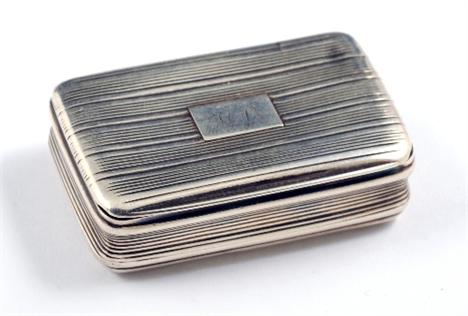186049 Preisdatenbank Los(e) gefunden, die Ihrer Suche entsprechen
186049 Lose gefunden, die zu Ihrer Suche passen. Abonnieren Sie die Preisdatenbank, um sofortigen Zugriff auf alle Dienstleistungen der Preisdatenbank zu haben.
Preisdatenbank abonnieren- Liste
- Galerie
-
186049 Los(e)/Seite
ROYCE, Henry The First Aero Engine Made by Rolls-Royce Ltd (Rolls-Royce Ltd). December 1915 (Preface). 4to. 301 pp, quarter blue morocco with red spine label with gilt spine title, gilt `RR` and `1914-1916` on the spine, gilt title on upper board. "Confidential. The property of Rolls-Royce Ltd. Not to be shown to anyone without the authority of the directors" gilt-stamped on the upper board, leaf paged 199-200 excised (all known copies of this book have this leaf excised), number 77 in pencil on the free endpaper This book is probably the best insight ever printed into the thought processes of a great designer. It is a compilation of the memos sent at the start of WWI by Royce from the south coast of England to the Derby works. They cover the inception, design and development of the Eagle engine. (S. Skinner in "The Journal of the Aircraft Engine Historical Society, Vol. 7 No. 2 Spring 2008). Only "a few copies were issued. The book has come to be known among the staff as the Rolls-Royce `Biblie`. Aviation historian Sandy Skinner has suggested that no more than 100 copies were produced.
Rigg, Revd Arthur, A Practical Treatise on the Steam Engine Spon, London, 1878, 1st edition of this important work, original brown blind-stamped and gilt embossed boards, some edge wear and damage to spine, ex Crystal Palace Library (dispersed after the 1936 fire). Large octavo, xvi + 312pp. with 95 lithographic plates, some folding
Aviation Interest - the prototype teak wind tunnel aerodynamic testing model for the Mosquito Fighter Bomber, 52cm long This large, attractive wind-tunnel model, c.1940, is superbly constructed of teak wood throughout and is of the final version of the prototype of the legendary DeHavilland `Mosquito` fighter bomber. It is almost certainly that used in the Farnborough wind-tunnel by Thomas Summerville and Chrystelle Fougere (see attched obituary extract from The Times, June 24, 2009) in their research on vibration and buffeting, as it features the extended engine nacelles beyond the trailing edge of the wing. On the original first prototype (W4050) these nacelles were much smaller and shorter, but unfortunately they are not visible in the accompanying framed photograph of this historic aircraft parked at Salibury Hall, not far from DeH`s main factory at Hatfield, as the comouflage tarpaulins are draped over that part of the wing. In production, only ten Mark I photo-recce and ten Mark IV bombers featuring these short nacelles were built. Another interesting and significant item on this model is the presence of the tear-drop rear vision `blister` on the side of the cockpit; this protrusion could possibly also be contributory to airflow disturbance over the tail plane, so presumably was incorporated on the wind-tunnel model for this reason. No fewer than twenty-seven different versions of the Mosquito (by then a multi-role combat aircraft) were eventually produced during the war, but only a limited number featured this rear-view `blister`
A French Empire ormolu mounted French ebonised portico clock, 11.5cm circular dial, engine turned to centre, with Roman numerals, the bezel cast with stiff acanthus and lotus leaves, twin winding holes, eight day movement striking on a bell, the case with ogee moulded cornice above a deep frieze of flowering cornucopia and pierced anthemions, Doric columns, stepped rectangular base, applied with flowering stems, stylised flowerheads again with cornucopia, engine turned end bun feet, 55.5cm high, c.1850
A 19th century French bronze and ormolu portico clock, 8.5cm engine turned dial with Roman numerals, inscribed Tarault Paris, twin winding holes, eight day movement, striking on bell, architectural case, foliate cast pediment, dentil cornice, the frieze and apron, cast with anthemion florets, centred by a flowerhead, skirted base, engine turned feet, 44cm high, c.1830
A collection of items to include an oval cut black star diopside cabochon set ring; a circular cut opal cabochon set ring; a silver open faced fob watch with chain; a BOREL 1960`s red enamelled spherical fob watch with fancy link chain, original box and documents; a 9ct gold plated engine turned hinged bangle and other pieces, contained within a Rolex tooled red leather box (Qty)
A collection of silver and silver coloured boxes, comprising a circular silver box, Birmingham 1921, with a pull off engine turned cover, 5.5cm diameter; a small circular box, with hinged cover and Austrian control marks, 1.8cm diameter; a small rectangular box embossed with classical figures to the hinged cover, with import marks, 3.9cm long; a small silver box with St George and the Dragon to the hinged cover, with import marks, 4.3cm long; a silver coloured oval box decorated in the Georgian manner, apparently unmarked, 6.3cm long; and a circular silver coloured box with engraved foliate border enclosing engine turning, with a mirrored lid, apparently unmarked, 6.5cm diameter
Anonymous, a 14 carat gold full hunter pocket watch, ref. 88637, circa 1910, the four piece case with white enamel dial, black Arabic numerals, gold Louis hands, subsidiary seconds dial at 6 o`clock, 17 jewel frosted gilt movement, gold set and screw jewelling, bimetallic split balance, overcoil balance spring, whiplash micro regulator, engraved `Grand Siplome d`honneur Liege 1905 /ELECTA/Geneve 1896` to the cuvette, the monogrammed engine turned case 5.2cm, in original case
A silver beaker, maker`s mark A.B., Prague 1865, of baluster shape, engine turned decoration around a vacant cartouche with foliate scrolls and trophies, to one side is a farming figure, to the other the figure of Christ with an attendant angel, 8cm tall; with a two piece silver buckle by H.Matthews, Birmingham 1896, 10cm long, 120g (3.8 oz) gross
A set of three matched Georgian silver mounted plain glass toilet bottles, by Frederick Wade, London 1826/27, the pull off covers with engine turned borders, enclosing pierced and engraved leaf scrolls around a central vacant circular cartouche, 18cm and 12cm long, and one 10cm long and 8.3cm tall, 168g (5.4 oz) gross
William IV snuff box, probably by Joseph Turner, Birmingham, perhaps 1836, of oblong form, chased outline, engine-turned decoration, blank rectangular cartouche, width 7cms, (2¾"), another snuff box by Nathaniel Mills, Birmingham, probably 1830, with reeded decoration, engraved initials, 5cms, (2"), (2).
A large quantity of mainly Hornby 00 Gauge Locomotives and Accessories to include: Hornby Dinadin boxed Locomotive and Tender; Hornby BR Class A4 Loco Mallard and Tender; British Rail Diesel Locomotive Part Set to include Engine, three Carriages and quantity of Track; together with a small quantity of Railway Station Buildings and Accessories
A 1946 MG TC - `Little Red Rooster` HKN 514, first registered 2nd May 1946, possibly for the use of the Kent Police Force, the continuation log book on offer with the vehicle tells us that it was registered in Topsham, Devon on 11th January 1960, the present vendor bought the vehicle in January 1965 whilst at university. The engine number and chassis numbers match, the engine and brakes turn freely, all gears appear to be present. Full restoration of the vehicle is now required. HKN 514 is known to the MG Owners` Club and would be welcomed at any of the many classic rallies and events at home and abroad
-
186049 Los(e)/Seite


















































